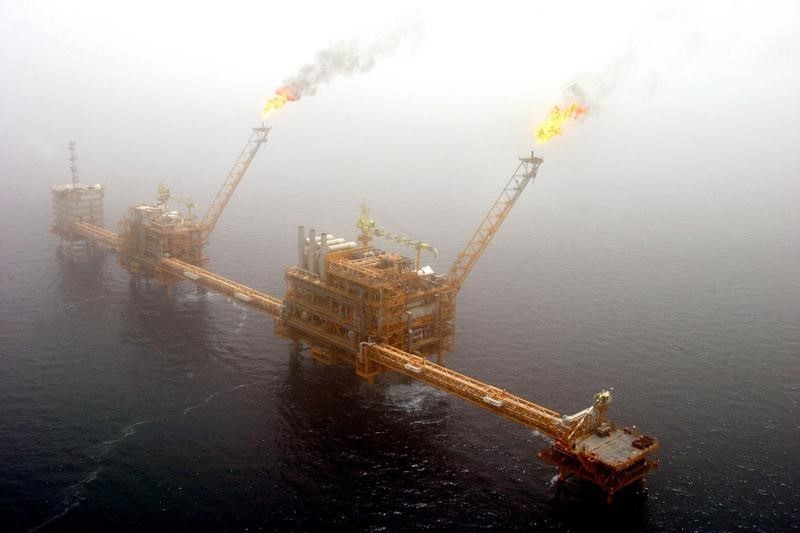* Drillers in U.S. added 12 rigs in week to Jan. 26 -Baker Hughes
* U.S. oil output soon expected to exceed 10 mln bpd
* Oil prices still on track for fifth straight monthly gain (Updates throughout, adds comment, refreshes prices; changes dateline from TOKYO)
By Amanda Cooper
LONDON, Jan 30 (Reuters) - Oil fell on Tuesday for a second day as a strengthening dollar dented risk-linked assets such as equities and other commodities, together with rising U.S. output, pushing the price below $69 a barrel for the first time in six days.
Brent crude futures LCOc1 fell 20 cents on the day to $69.26 a barrel by 1000 GMT, having touched a session low of $68.75, while U.S. West Texas Intermediate futures CLc1 dropped 51 cents to $65.05 a barrel.
European stock markets were firmly in negative territory after a recovering dollar and a drop in shares of Apple AAPL.O sent Wall Street to its largest one-day fall in five months the previous day. .EU FRX/
With oil's negative correlation to the dollar reaching its strongest in a month, even ongoing signs of robust demand for crude were not enough to ward off profit-taking following last week's rise to three-year highs.
"I do have the feeling that market optimism pushed prices perhaps a little bit too high, but ... as long as (inventories) continue to decline, for me, personally, I'm more and more looking at a 'buy-on-dips' strategy, so I'm looking for a correction lower," ABN Amro chief energy economist Hans van Cleef said.
Oil's inverse relationship to the dollar, whereby a stronger currency makes it more expensive for non-U.S. investors to buy dollar-denominated assets, has reasserted itself this week.
"Correlations are funny things. Sometimes they work and sometimes they don't. For most of 2017, the relationship between the dollar and the oil price was not obvious," PVM Oil Associates strategist Tamas Varga said in a note.
"This is the trend that seems to be turning, judging by yesterday's price action and this morning's moves. Rising US bond yields caused dollar shorts cover and as a result oil prices fell."
Expectations for U.S. inventories to rise for the first time in 11 weeks may also be keeping oil under pressure, according to a preliminary poll by Reuters on Monday. USOILC=ECI
U.S. production is already on par with that of Saudi Arabia, the biggest producer in the Organization of the Petroleum Exporting Countries (OPEC). Only Russia produces more, averaging 10.98 million barrels per day (bpd) in 2017. output C-OUT-T-EIA has jumped more than 17 percent since mid-2016 and is expected to exceed 10 million bpd soon.
The rising tide of U.S. oil output comes after prices rose following an agreement by OPEC producers, along with Russia and other countries, on output curbs. OPEC/O EIA/S
<^^^^^^^^^^^^^^^^^^^^^^^^^^^^^^^^^^^^^^^^^^^^^^^^^^^^^^^^^^^ GRAPHIC: The relationship between oil and the U.S. dollar
http://reut.rs/2DMalIN GRAPHIC: U.S. oil rig count
http://reut.rs/2DIowP1
^^^^^^^^^^^^^^^^^^^^^^^^^^^^^^^^^^^^^^^^^^^^^^^^^^^^^^^^^^^>
